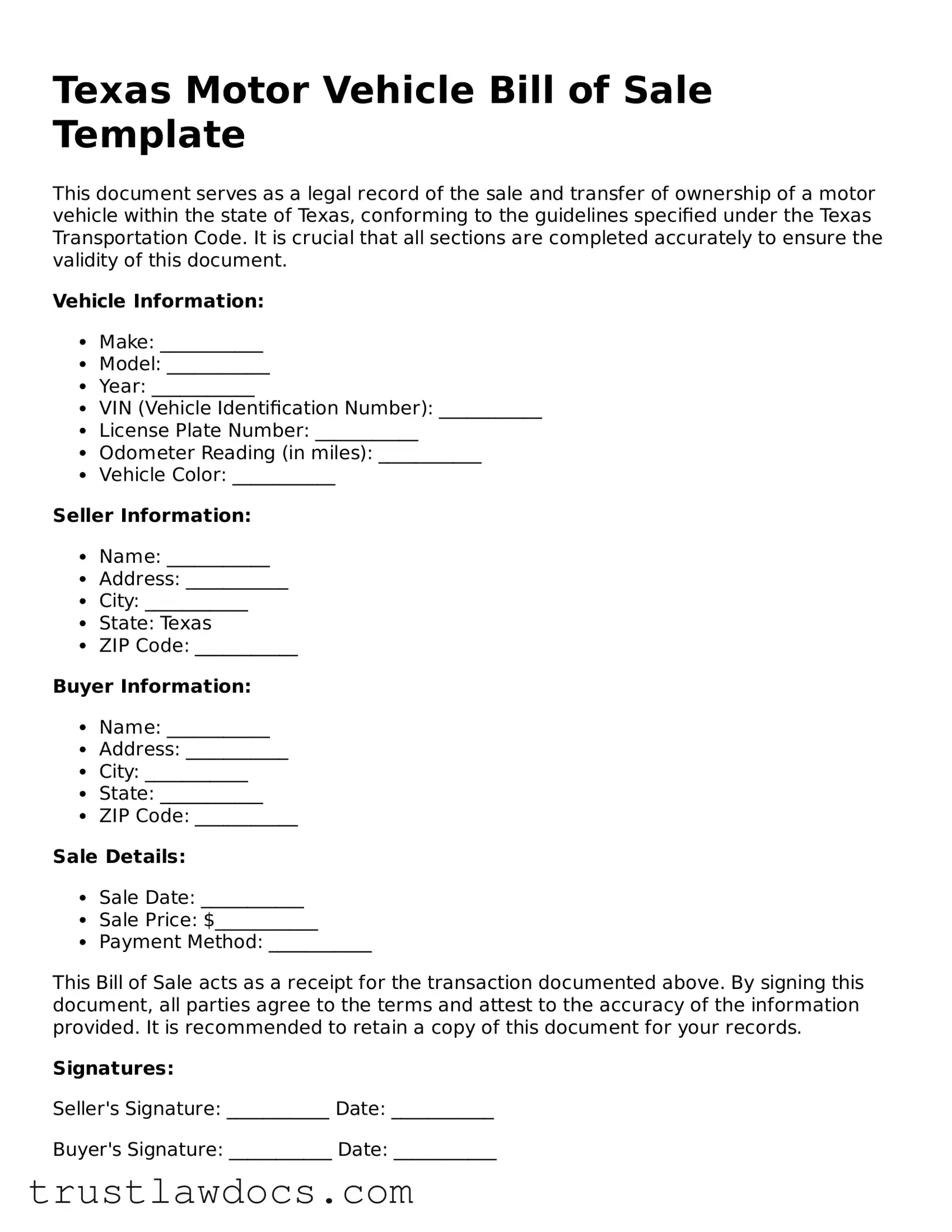What is a Texas Motor Vehicle Bill of Sale?
A Texas Motor Vehicle Bill of Sale is a legal document that records the sale of a vehicle in the state of Texas. It provides evidence that a transaction between a seller and a buyer has taken place, detailing the sale's specifics such as the date, price, and information about the vehicle including make, model, and VIN (Vehicle Identification Number). This document is crucial for the legal transfer of ownership.
Is a Motor Vehicle Bill of Sale required in Texas?
In Texas, a Motor Vehicle Bill of Sale is not strictly required to complete the transfer of ownership for a vehicle, as the state relies more heavily on the title transfer. However, it’s highly recommended as it provides a written record of the vehicle’s sale which can be beneficial for tax, legal, and personal record-keeping purposes.
What information should be included in a Texas Motor Vehicle Bill of Sale?
A Texas Motor Vehicle Bill of Sale should include the full names and contact information of both the seller and the buyer, a detailed description of the vehicle (make, model, year, VIN), the sale price, the date of sale, and signatures of both parties involved. It’s also advised to include an odometer disclosure statement.
Do both parties need to sign the Texas Motor Vehicle Bill of Sale?
Yes, for a Texas Motor Vehicle Bill of Sale to be considered valid, it should be signed by both the seller and the buyer. These signatures do not necessarily have to be notarized in Texas, but having the document notarized can add an extra layer of legal protection and authenticity to the document.
How does a Texas Motor Vehicle Bill of Sale benefit the buyer?
For the buyer, a Motor Vehicle Bill of Sale serves as proof of the transaction and ownership until the title transfer is completed. It can also be useful for state registration purposes and may be needed to obtain vehicle insurance. Additionally, it provides detailed information about the vehicle's condition and terms of sale agreed upon by both parties.
Is it necessary to register a Bill of Sale with the state of Texas?
No, it is not necessary to register a Motor Vehicle Bill of Sale with the state of Texas. However, the buyer must ensure the vehicle is properly titled and registered in their name after the purchase. The Bill of Sale can be an important document in this process but is not the official record of ownership transfer.
